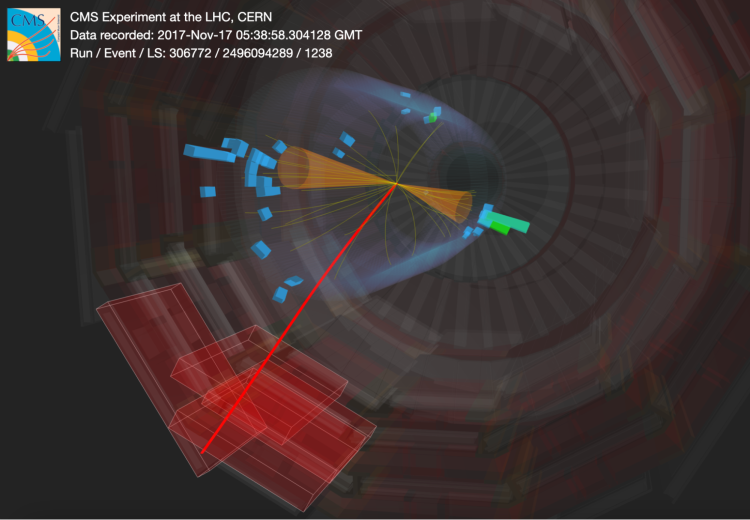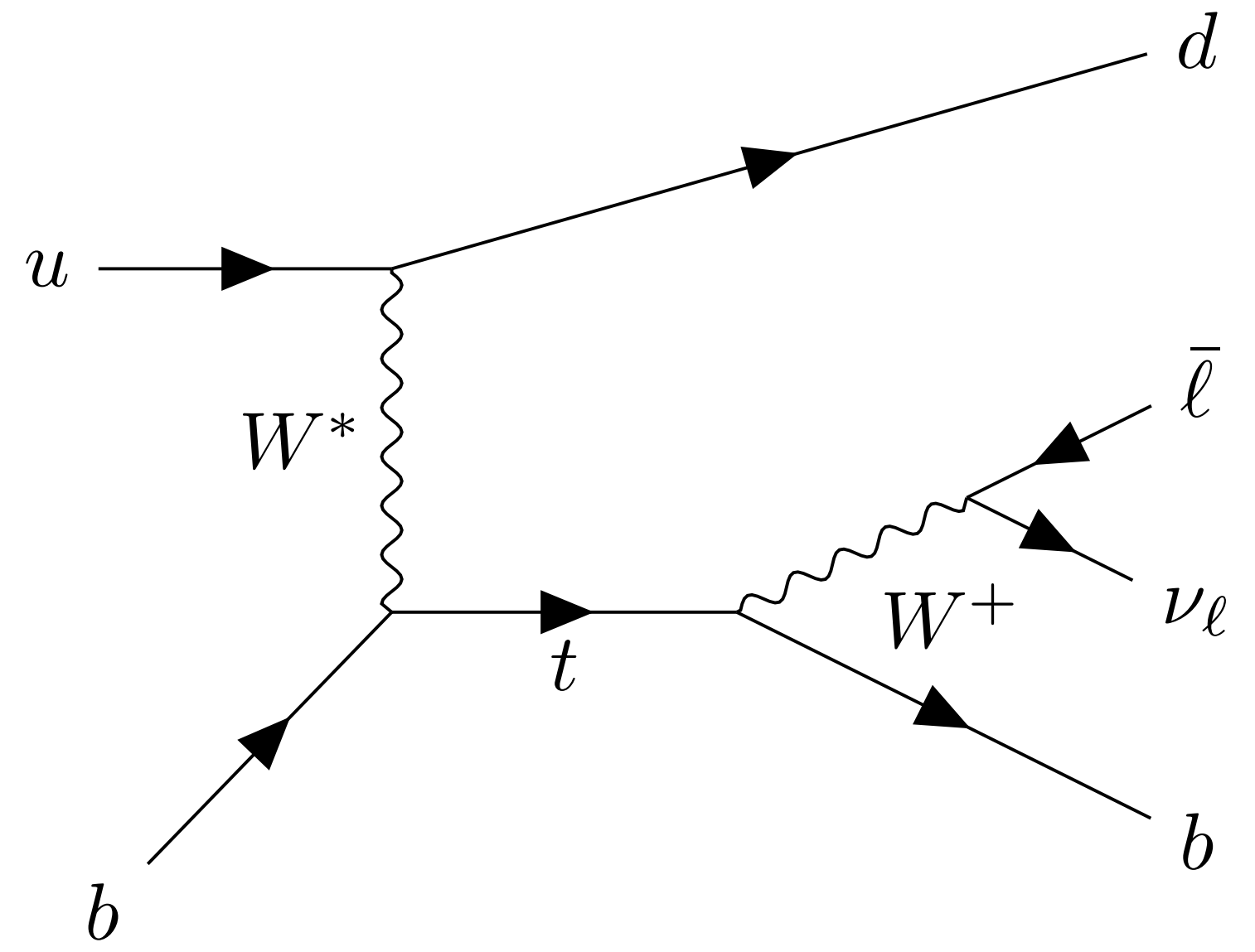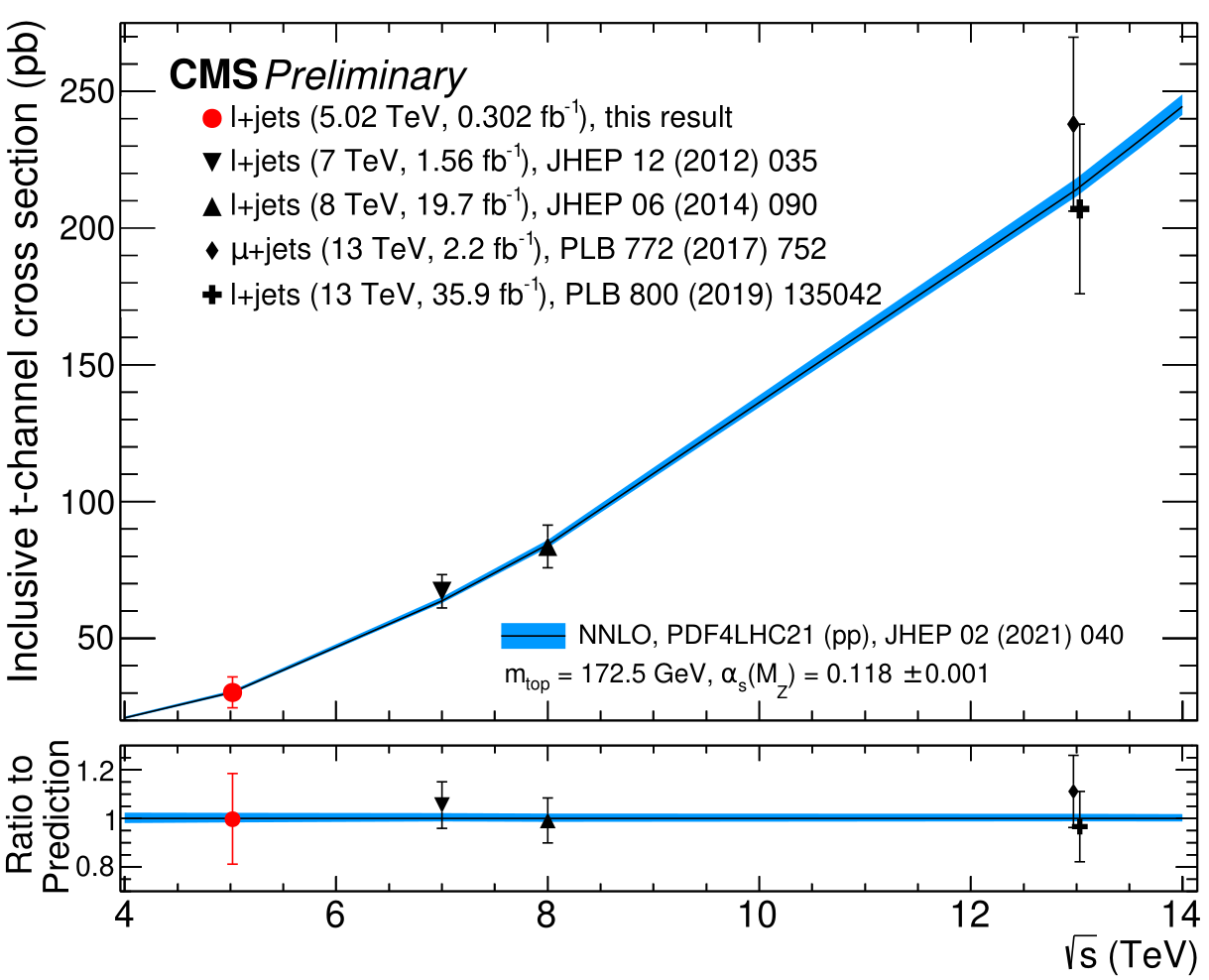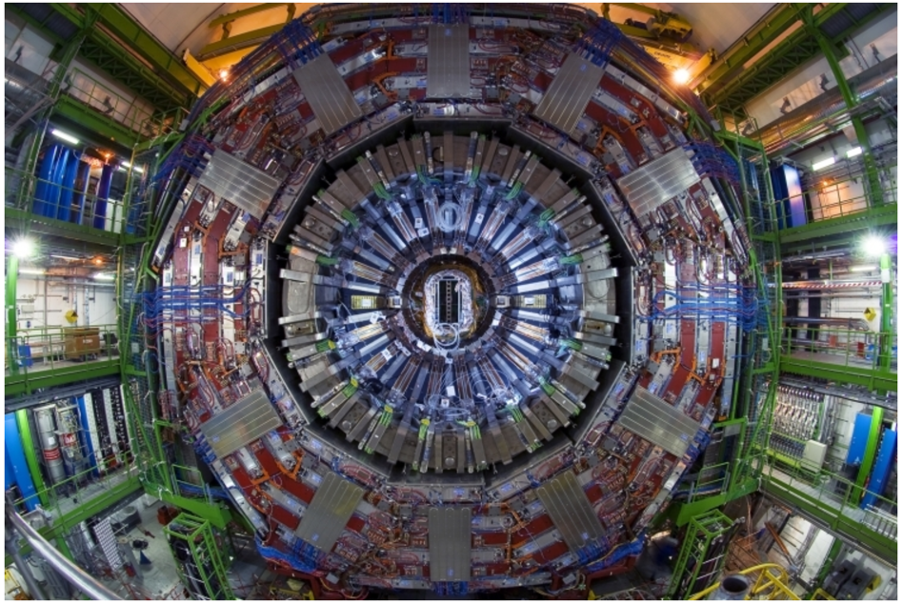
For the first time, the CMS experiment measures the production of single top quarks in a mode called the “t-channel” at 5.02 TeV, reporting results aligned with the standard model expectations.
In the quest to probe the fundamental laws of nature, the Large Hadron Collider (LHC) has been operated with both protons and heavy ions. While heavy ion collisions involve interactions between nucleons at relatively lower energies per nucleus, proton-proton (pp) collisions typically occur at higher energies—currently at an energy of 13.6 TeV, the highest ever reached at a particle collider. To enable direct comparisons between heavy ion and pp collisions,, the LHC occasionally performs dedicated low-energy pp collisions corresponding to the energy of heavy ion collisions.
A central objective of the LHC program is to rigorously test the predictions of the standard model (SM) of particle physics. The top quark, as the most massive known elementary particle, is a key component of this pursuit. At the LHC, top quarks are mainly produced in pairs, via the strong interaction, but they can also be produced alone, via the electroweak interaction. One of the modes in which single top production can occur is the “t-channel” production, in which a bottom quark transitions into a top quark by exchanging a W boson with a lighter quark, shown below.

Above: A schematic (Feynman) diagram showing how a top quark is produced when a bottom quark exchanges a W boson with a lighter (up) quark—the t-channel.
In November 2017, the LHC delivered 5.02 TeV pp collisions, providing an opportunity to study single top quark production in the t-channel at this energy for the first time. This would complement previous measurements of top quark pair production and establish a reference for comparisons with heavy ion data. “This was a unique occasion to study the single top quark production at a new collision energy”, says Javier del Riego, a PhD student at the ICTEA-University of Oviedo, who performed the data analysis.
The measurement was made by looking for one lepton, i.e. electron or muon, in the final state, and partitioning the set of studied events in different categories based on the number of jets (collimated sprays of particles). A relatively small data sample was sufficient to obtain a precise result, which can be compared to values at other energies. The measured cross section—i.e. the number of produced top quarks per proton collision— is 30.2 ± 5.5 pb. The result bridges the gap between the energy regime explored at the Tevatron (2 TeV) and the nominal LHC collision energies, thereby probing the SM predictions in an intermediate regime. In the figure below, the measured value is compared with other measurements and with state-of-the-art theoretical predictions, as a function of the pp collision energy. This result represents the first CMS measurement of the process at this energy. “This result shows that CMS data continues to yield exciting results at new energy scales, even from small datasets”, Javier del Riego adds.

Above: Rate of production of single top quark in the t-channel as a function of the collision energy. The new measurement is displayed with a red marker. The bottom panel shows the ratio between the measurements and the SM predictions.
Written by: Javier del Riego, for the CMS Collaboration
Edited by: Muhammad Ansar Iqbal
Read more about these results:
-
CMS Physics Analysis Summary (TOP-24-011): "Measurement of the t-channel single top quark cross section in pp collision data at √s = 5.02 TeV"
-
Display of collision events: CERN CDS
-
@CMSExperiment on social media: Bluesky - Facebook - Instagram - LinkedIn - TikTok - Twitter/X - YouTube

